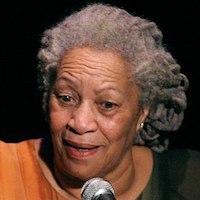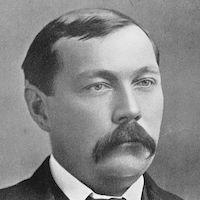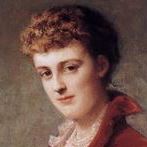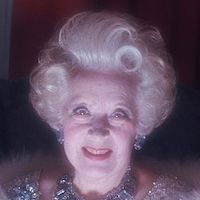
W. Somerset Maugham
“The writer must make the reader eager to go on and turn the page. Those qualities appear in the highest degree attained in English literature in Jane Austen. I turn each page in a frenzy to know what happens. Of course, nothing happens, but I must hurry on to turn the next page. Even while I am lost in the story, I ask myself how she manages this trick. My advice for young writers is that Jane Austen probably was able to convey the feeling of belief because she enormously believed herself in the reality of her characters and what they were doing.”

Isabel Allende
“When my agent, Carmen Balcells, got the manuscript of The House of the Spirits in Spain, she called me in Venezuela and said, “Everybody can write a good first book, because they pour everything they have into it—their past, memories, expectations, everything. The writer is proven on the second book.” So I started writing my second book on January 8 of the following year, to prove to this agent I’d never met that I could be a writer…Each book is an offering; you just put it on the table and see who will accept it.”

John Grisham
“There are three types of words: (1) words we know; (2) words we should know; (3) words nobody knows. Forget those in the third category and use restraint with those in the second. A common mistake by fledgling authors is using jawbreaking vocabulary. It’s frustrating and phony.”

Toni Morrison
“I try really hard, even if there’s a minor character, to hear their memorable lines. They really do float over your head when you’re writing them, like ghosts or living people. I don’t describe them very much, just broad strokes. You don’t know necessarily how tall they are, because I don’t want to force the reader into seeing what I see. It’s like listening to the radio as a kid. I had to help, as a listener, put in all of the details. It said “blue,” and I had to figure out what shade.”

Arthur Conan Doyle
“When the work is done the money is very welcome, and it is the author who should have it. But I have never accepted a contract because it was well paid, and indeed I have very seldom accepted a contract at all, preferring to wait until I had some idea which stimulated me, and not letting my agent or editor know until I was well advanced with the work. I am sure that this is the best and also the happiest procedure for an author.”

Edith Wharton
“There are only two essential rules: one, that the novelist should deal only with what is within his reach, literally or figuratively (in most cases the two are synonymous), and the other that the value of a subject depends almost wholly on what the author sees in it, and how deeply he is able to see into it.”

Sinclair Lewis
“When you write don’t worry about whether or not it’ll sell…Don’t want success at twenty-two. If you want fame, be a prizefighter or a movie star…And never forget that you’re competing with Shakespeare.”

Janet Evanovich
“Sit your butt in the chair and start writing. Do it every day.”

Barbara Cartland
“My latest pill is the new brain pill. It’s made from crushed sheep’s brain…My grandchildren take them, too; they call them ‘granny sweeties.’ I take enormous amounts of vitamins each day…I think milk is bad for you, you should eat lots of protein, good breakfast. I’m against citrus fruit; it makes the breath smell from putrefaction.”
Lapham’s Quarterly is running a series on the history of best sellers, exploring the circumstances that might inspire thousands to gravitate toward the same book and revisiting well-loved works from the past that, due to a variety of circumstances, vanished from the conversation after they peaked on the charts. We are also publishing a digital edition of one of these forgotten best sellers, Mary Augusta Ward’s 1903 novel Lady Rose’s Daughter, with a new introduction, annotations, and an appendix. To read more about the project and explore the other entries in the series, click here.